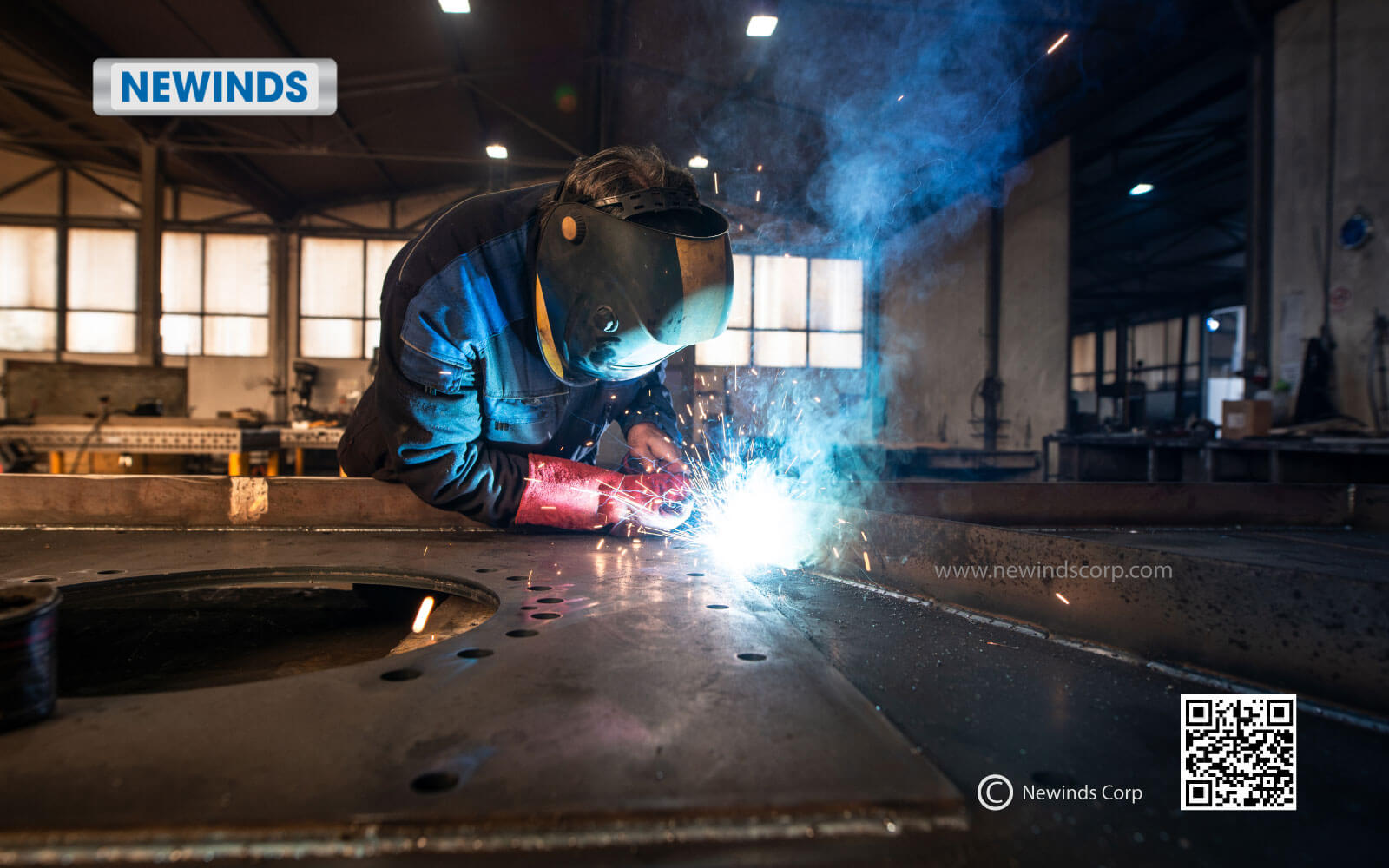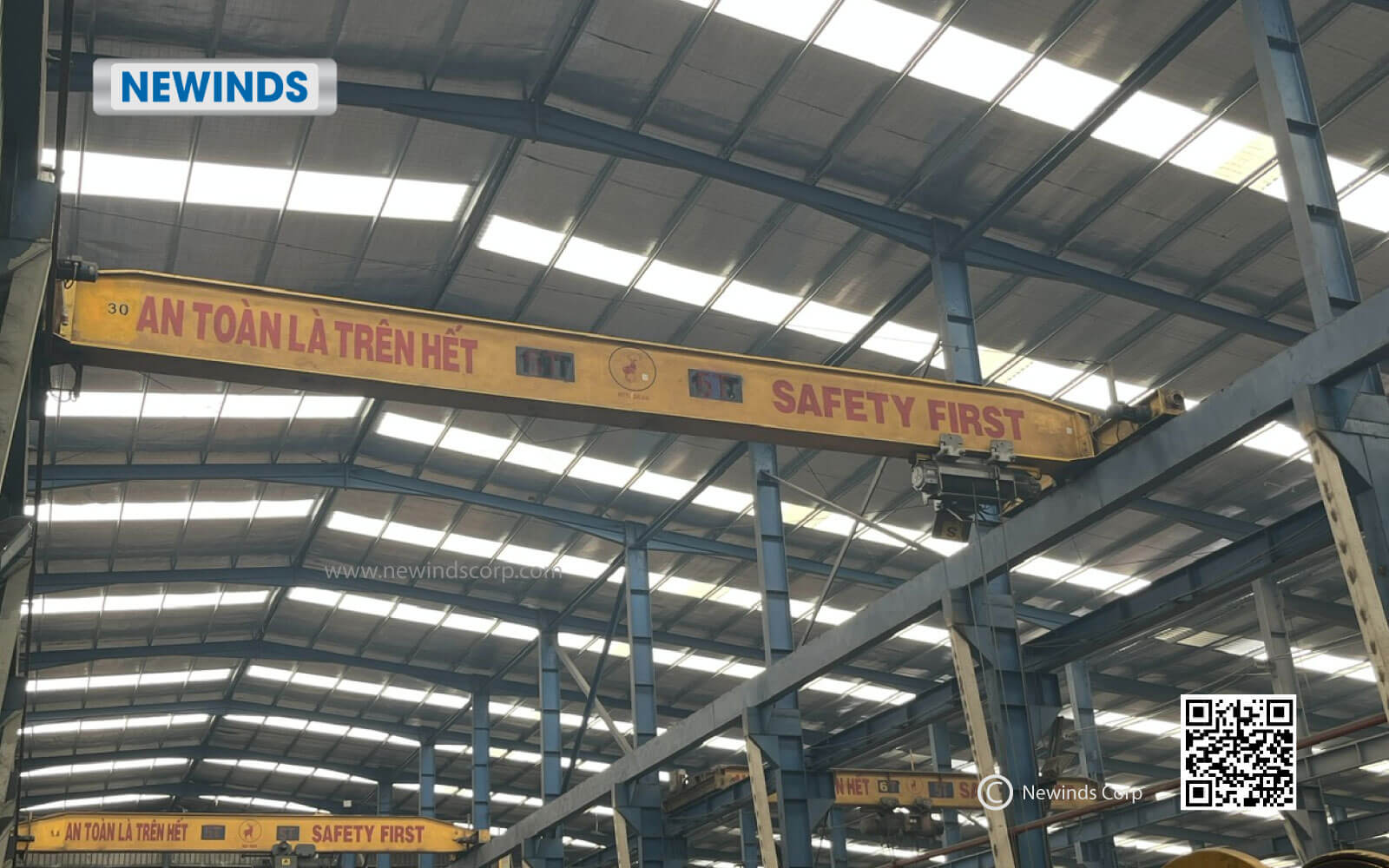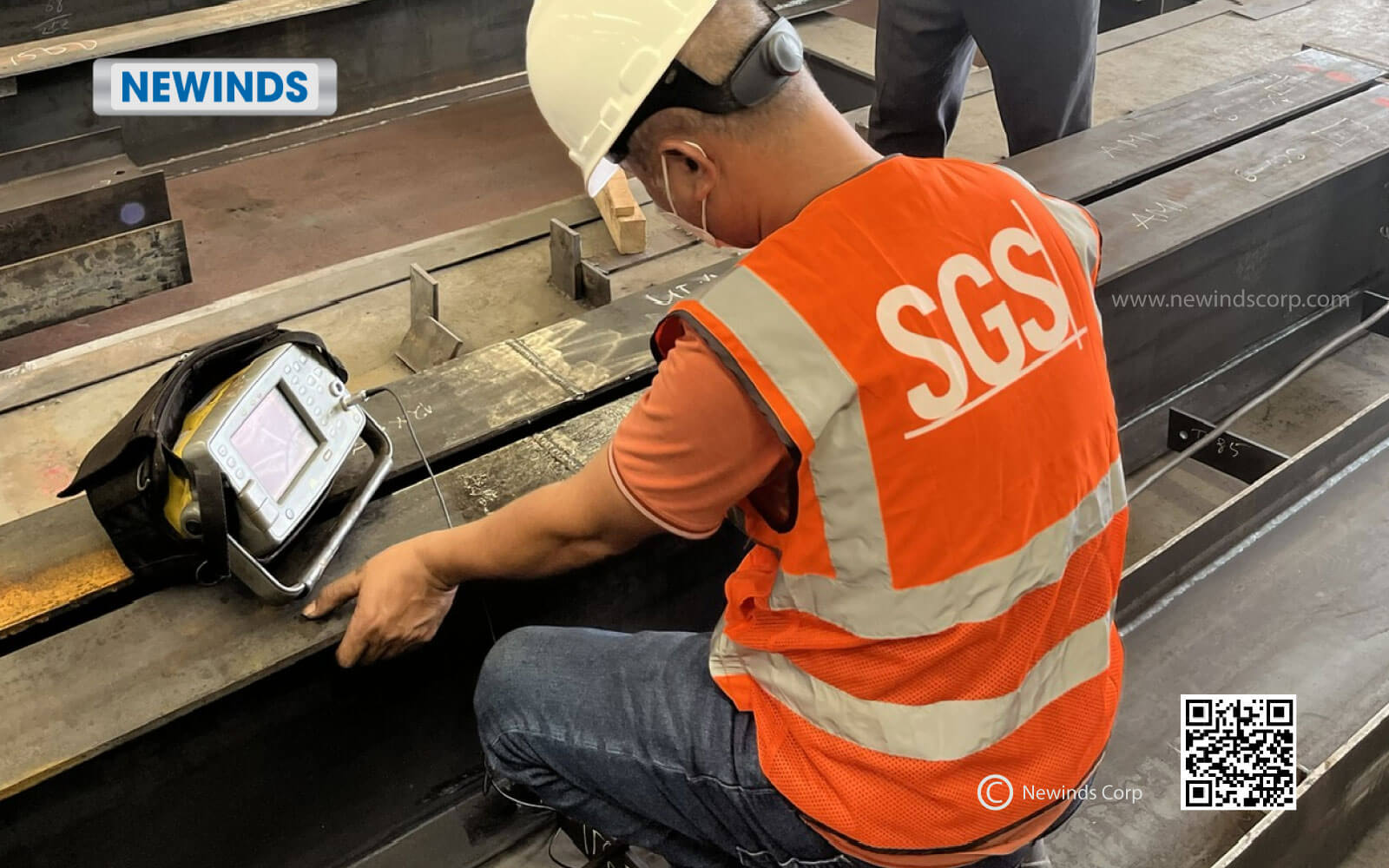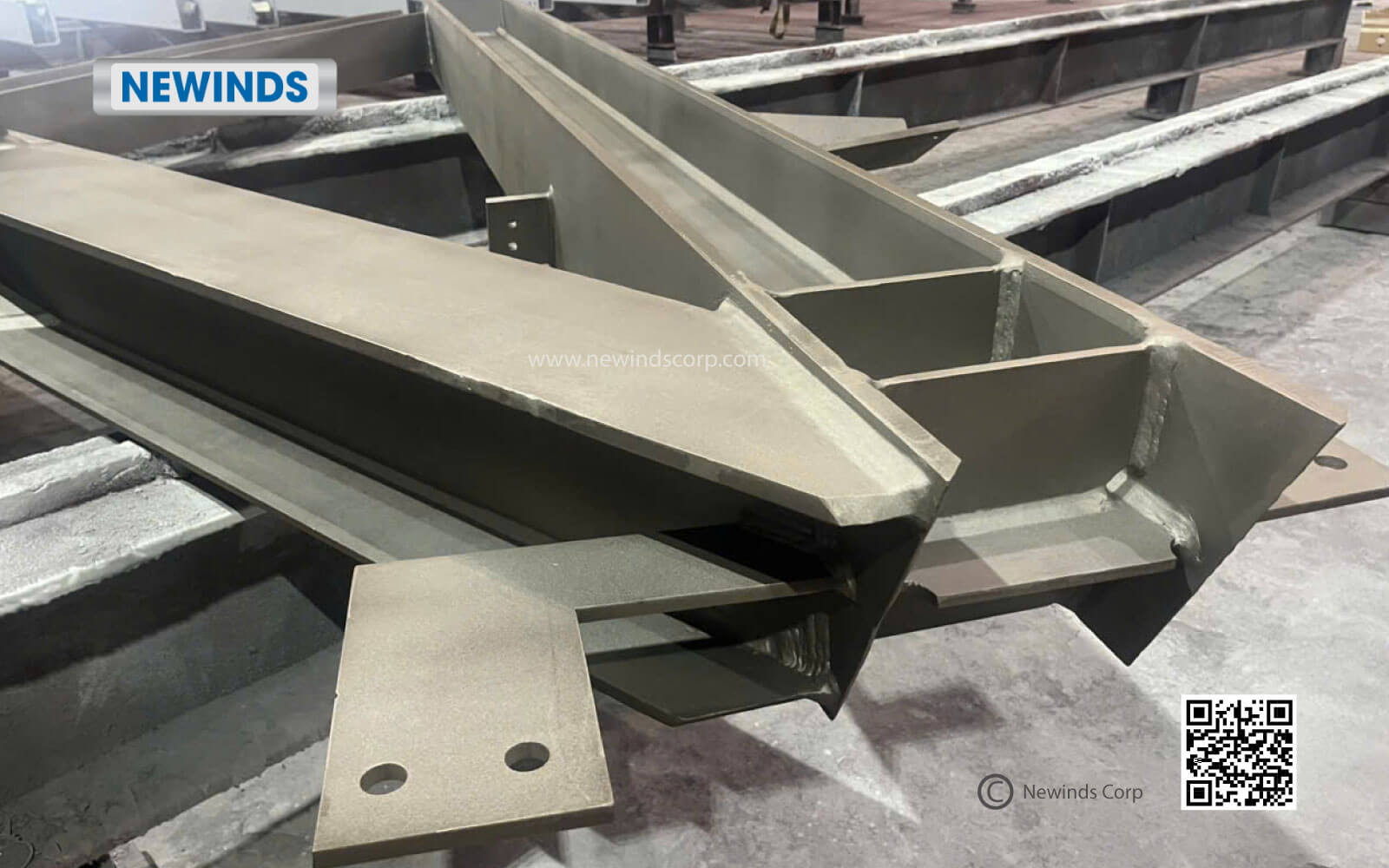Structural steel fabrication plays an important role in providing high-quality steel components such as steel trusses, steel beams, and steel frames to meet the demands of residential, commercial, industrial, and infrastructure construction projects. Join Newinds to explore the details of steel fabrication in the article below.
Structural steel fabrication overview
Structural steel fabrication is the process of cutting, bending, and assembling raw steel to create a complete steel structure. Raw steel transforms into specific shapes and sizes to match the project’s design requirements.
Key steps in the structural steel fabrication process
The process of fabricating structural steel is relatively complex, requiring extensive knowledge, experience, skills, and resources to produce high-quality products that ensure safety. The key steps include:
1. Design
First, technical 2D drawings are created to model detailed specifications, structural components, and calculate potential errors during fabrication and installation. This step often involves the use of Computer-Aided Design (CAD) software to ensure design precision.
2. Material Selection
The procurement team analyzes the Bill of Material (BOM) to select materials that meet the project’s requirements. Critical factors such as load-bearing capacity, weight, and operating environment are carefully considered. Once finalized, the steel is delivered to the factory for fabrication.
3. Cutting
The steel is modified to the exact dimensions and drilled to create necessary holes as specified, using tools like CNC machines, plasma cutters, saws, or lasers.
4. Bending
Steel sections are bent to specific angles using press brakes or rolling machines to achieve the desired shapes.
5. Assembling
The cut and shaped steel pieces are temporarily assembled and fixed into position, preparing them for subsequent steps.
6. Welding
Steel components are permanently joined using welding techniques such as MMA (Manual Metal Arc) or MAG (Metal Active Gas). Welding may be performed manually or using machines, and the process is closely supervised by experienced engineers to ensure durability.
7. Surface Treatment
The steel is coated with protective layers, such as galvanization or painting, to prevent corrosion and enhance durability.
8. Quality Control
After each fabrication stage, the structural steel undergoes stringent quality inspections to ensure they meet the required standards and specifications before being transported to the construction site for assembly.
9. Shipping
Structural steel will be packed and transported to the construction site. It is essential to thoroughly check the quantity before shipment to avoid shortages upon delivery. Additionally, steel components must be arranged logically to ensure safety and quality during loading and transportation.
Quality Assurance After Structural Steel Fabrication
1. Dimensional Inspection
After the structural steel fabrication stage is completed, a dimensional inspection is essential to verify whether the steel components align precisely with the technical drawings. The inspection covers both overall dimensions and detailed features such as length, bolt hole positions, straightness, and flatness. Common measuring tools include steel rulers, measuring tapes, laser distance meters, and coordinate measuring machines (CMM) for high-precision requirements. Every measurement must be conducted meticulously, as even minor deviations can significantly impact the installation process and compromise the overall safety of the project.
2. Welding Inspection
This step focuses on evaluating the quality and structural integrity of all welded joints. Depending on the project’s technical specifications, inspections may be carried out visually or through advanced methods such as ultrasonic testing (UT), radiographic testing (RT), or magnetic particle testing (MT). In Vietnam, recognized testing organizations such as QUATEST and SGS are often responsible for conducting these inspections to ensure welding compliance and safety.
3. Material Testing & Certification
To ensure structural steel fabricators use only high-quality steel, all materials must be certified through Material Test Certificates (MTCs). These certificates validate the chemical composition and mechanical properties of the steel, including tensile strength, bending, and impact resistance. This ensures that all materials meet the safety and performance standards required by the project.
4. Coating Inspection
The inspection of protective coatings such as paint or galvanization is crucial for ensuring durability, especially in harsh environments. The process includes measuring coating thickness with specialized instruments and evaluating the surface for consistency, adhesion, bubbling, peeling, or discoloration. Depending on technical project requirements, advanced coatings such as epoxy, zinc-rich paints, or hot-dip galvanizing (HDG) may be applied to maximize corrosion resistance.
5. Trial Assembly / Fit-up Inspection
Before delivery to the construction site, structural steel components should be trial assembled at the fabrication facility to verify proper alignment and fit. This step involves checking bolt hole positions, clearances, and overall part compatibility. Early detection of fabrication errors allows for corrective action before shipping, reducing delays and rework during on-site installation.
6. QA/QC Standards Compliance
All quality inspection activities must adhere to internationally recognized standards such as AWS D1.1 for welding, AISC, BS EN 1090, and ISO 9001. Every stage of fabrication is documented through detailed inspection reports, ensuring traceability and accountability throughout the manufacturing process. These records serve as essential documentation for audits, client review, and project certification.
Optimal practices for quality and safety
To ensure the highest quality and safety standards, optimal practices are followed, including:
- Design and Detailing: Utilizing advanced Building Information Modeling (BIM) software for accurate planning and clash detection.
- Material Selection: Choosing the appropriate grade of steel to guarantee structural integrity and longevity.
- Precision Cutting and Shaping: Employing techniques like plasma cutting for swift and accurate cuts.
- Expert Welding Techniques: Utilizing methods such as Shielded Metal Arc Welding (SMAW) for durable joins.
- Reliable Structural Steel Fabricator: Partnering with experienced steel fabrication companies that specialize in relevant products and have earned strong client recognition.
Structural steel fabrication services from Vietnam
As a structural steel fabricator with over 17 years of experience, Newinds Vietnam has successfully delivered structural steel solutions worldwide. We are always ready to provide flexible steel fabrication services tailored to your needs, including:
- Laser Cutting
- Forming & Punching
- Stamping & Folding
- Bending & Machining
- Welding & Finishing
- Value-Added Services such as sourcing in castings, plastics, rubber, and more
Contact Newinds:
Email: sales@newindscorp.com
Phone/Whatsapp/Zalo: Ann Yen +84 868 482 038



